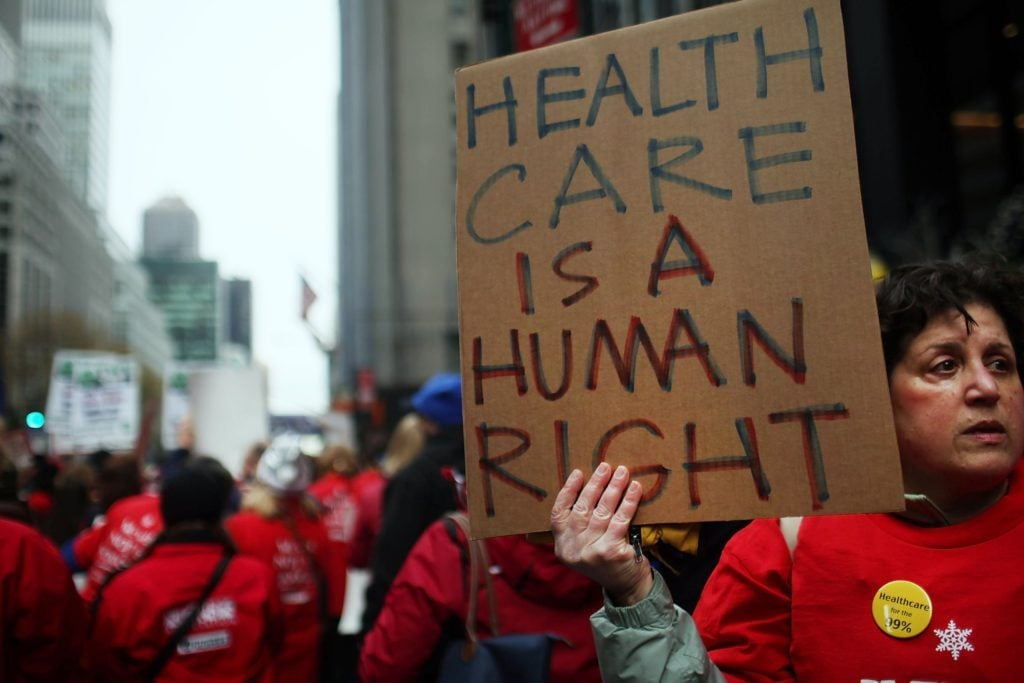
A team of reporters at The State, a newspaper based in Columbia, South Carolina, recently released a damning exposé of a healthcare crisis. The 29203 zip code in Richland County, central South Carolina, was found to have a diabetic amputation rate of 9.96—the highest among 120 other zip codes analyzed in Deep South states with populations greater than 10,000.
Poor, Black and diabetic—more likely to lose limbs
Nationally, amputations are at epidemic levels. Zip-codes with high percent of poor, Black residents had the highest rate of diabetes-related amputations. A Dartmouth Institute study in 2014 found that diabetic amputations are three times higher in Black than in white patients, with the rural South seeing even higher rates.
Mortality rates from diabetes are also much higher for Blacks than whites. Amputations and increased mortality are related. In addition to being subjected to a traumatic, painful and disabling surgery, 50-80% of diabetics with below-the-knee amputations die within 5 years.
South Carolina ranks as the eighth state in the country with the highest prevalence of diabetes. This disease and its complications are geographically clustered in poor, predominantly Black counties. For some time the highest amputation rates have been in rural areas and the infamous “corridor of shame,” the area surrounding the I-95 corridor where rates of poverty are highest and where education, healthcare and other public services are the most neglected. It is also the region with the highest percentage of Black people in the state.
Conditions that set the stage for amputations
“It didn’t have to be this way,” said the opening sentence of the The State’s report. Many cases of diabetes can be prevented with education and proper nutrition. And for those who develop the disease, amputations of toes, feet and legs can be avoided in most cases if diabetes is adequately managed with regular monitoring of blood glucose levels, regular checkups, access to proper medication and its correct administration, healthy eating and regular exercise.
Like the 29203 zip-code in this state, many poor areas with many diabetics areas are food deserts. Supermarket redlining policies incentivize grocery stores to invest in wealthy white neighborhoods. This leaves poor neighborhoods to rely on convenience stores and Dollar Generals for food, places where fruit, vegetables, low-fat protein sources and whole grains are not generally or consistently available.
People living in dilapodated neighborhoods do not have many options for exercising. Nearby trails, paved sidewalks and well-lit streets are often absent. This is a direct result of the lack of infrastructure investment in poor and predominantly Black and Latino neighborhoods.
Similarly, healthcare is out of reach for many low-income communities in the Deep South. In the 29203 zip code roughly half of the residents have no health insurance coverage at all. Private health insurance is too expensive and generally tied to employment. The Affordable Care Act passed under the Obama administration sought to expand Medicaid, but since then the Supreme Court mandated that states had the option to opt-out. Many Deep South state governments opted out of the Medicaid expansion leaving millions of working-class people uninsured to this day.
Uncontrolled diabetes among the patient population is also very much a result of widespread ignorance about risk factors for the disease and the disease process. Not a few of those living in zip code 29203 didn’t know that they had diabetes until it was so advanced that they needed an amputation. This could be corrected at the community level through mass public health education, but an underfunded public health system rules out this option.
This system of privatized healthcare does not emphasize preventative and primary care, which is not profitable. It disproportionately focuses on emergent care, which brings in the dollars. As a consequence, there is no community health education in the geographic areas mentioned.
There is a shortage of facilities, medical specialists, specialty surgeons and medical equipment in many counties in the Deep South, particularly rural ones, to treat diabetes and its complications. Patients in rural areas often must travel hundreds of miles to access specialized care. Procedures like angioplasty, which widens plaque-clogged arteries and can save limbs, continue to be inaccessible.
In fact, there have been many scientific advances in care for those who have diabetes. But with thirty million people without any health-care coverage and others paying high insurance premiums before they can get care, these advances are not available to everyone.
Meanwhile giant pharmaceutical companies have jacked up the price of insulin which is vital to the survival of many people with diabetes. Some 14 percent of people who use insulin in the U.S. must spend at least 40 percent of their post-subsistence income — what is left after paying for food and housing — on insulin. So 1.3 million people in the U.S. ration insulin, due to high cost.
So the disease advances, especially among the oppressed.
These factors in combination have a detrimental toll on health as a whole, increasing the risk not only for diabetes but also for obesity, hypertension and cardiovascular diseases. The same counties in the “corridor of shame” with the highest rates of diabetic amputations also have the highest rates of other diseases.
Capitalism is the disease
These healthcare inequities cry out to be addressed. However, capitalism—the economic system in the United States— upholds the rule of corporate boards, and CEOs who always put profits over human lives. As a result, the United States continues to produce and reproduce health disparities based on race, class and income.
There is another way. Profits don’t have to drive the economy. Under socialism, an economic system which puts meeting human needs first, the criminal system of for-profit healthcare and private insurance companies is outlawed. Health care is guaranteed to all as a human right. This is the case in Cuba. Healthcare there is administered by the government. There are no profit driven HMOs, pharmaceutical companies or for profit hospitals.
Even though Cuba is a poor country subjected to a punishing U.S. economic embargo, because it has the political will to deliver healthcare to its population as their human right it has become a global leader in the holistic management of diabetes. Cuba has achieved the lowest diabetes mortality rate in Latin America, according to the Pan-American Health Organization.
The Cuban medical system is tailored first to prevent diabetes, and then to identify people with diabetes before the disease advances, and treat it immediately. While for-profit companies in the U.S. price-gauge for insulin, this essential medication is free in Cuba.
What of diabetic amputations, which are on the rise in the U.S., especially in communities of color?
Cuba’s state-owned biopharmaceutical industry has created the drug Heberprot-P, and made it free to all who need it. This is the only drug in the world capable of enhancing the healing of diabetic foot ulcers, a chronic diabetic wound that increases the risk of limb amputation. With this medication Cuba has reduced amputations in diabetics by 71%.
The tens of thousands of people who lose their limbs to diabetic amputations in the United States would benefit from this medication. But the U.S. embargo of Cuban products prohibits the importing Heberprot-P, denying Americans with diabetes from benefiting from this medication.
This key medication will only be made available here with a struggle. Its time to fight to outlaw medical profiteering, to end punishing U.S. embargos and share medical advances from other countries and to put people before profits.

